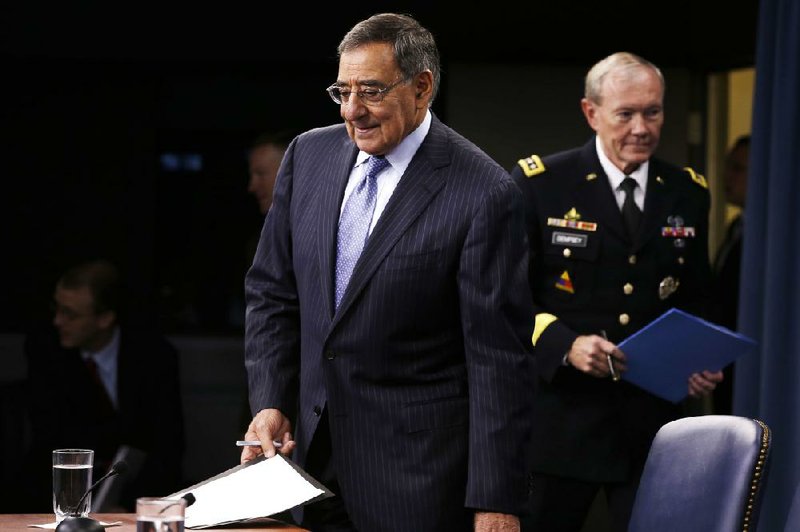WASHINGTON — Most U.S. and coalition combat units in Afghanistan have returned to their practice of partnering with Afghan forces, nearly two weeks after the top U.S. commander put restrictions on such arrangements, Defense Secretary Leon Panetta said Thursday.
Speaking at a Pentagon news conference, Panetta provided no details on why partnering has returned to normal in most cases.
The limitations had been set by Gen. John Allen on Sept. 16 after a string of deadly insider attacks against coalition forces and amid concern about Afghan backlash over an anti-Islam video.
As of Thursday, more than half the operations included both coalition and Afghan forces, according to a U.S. defense official who spoke on condition of anonymity because the person was not authorized to release details. That compares to 90 percent of operations that included NATO and Afghan troops before the new restrictions that were implemented nearly two weeks ago.
A spike in insider attacks — where Afghan forces or insurgents wearing their uniforms turned their guns on their NATO counterparts — led commanders to limit when certain coalition and Afghan troops could patrol or work together.
Under the new directive, partnered operations such as patrols or the manning of outposts with small-size units now must be approved by the senior regional commander. Since Allen issued the directive, there has been one nonfatal insider attack, on Sept. 17. There have been 51 deaths attributed to insider attacks this year.
To approve the mission, commanders must review all of the risks and benefits of the operation and decide whether it is worth the risk of the mission as well as an insider attack. The plan for the operation also must include the additional steps the unit will take to safeguard the troops.
In some cases, the steps involve adding more guards or identifying specific points in the mission where the troops could be at greater risk, and then taking precautions to mitigate those risks.
U.S. officials have said that when they first began to use the new approval process, U.S.-Afghan joint operations fell off significantly, but the approval process is beginning to work more smoothly.
Commanders also have ordered American troops to carry loaded weapons at all times in Afghanistan, even when they are on their bases.
Front Section, Pages 2 on 09/28/2012

